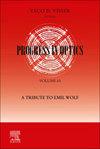Comparison of Novel Raman Techniques for Fiber Forensics
3区 物理与天体物理
Q1 Materials Science
引用次数: 0
Abstract
We have proposed three novel Raman techniques to expand capabilities for non-destructive dyed-fiber forensics: THz Raman spectroscopy (TRS), integrating-cavity-enhanced Raman spectroscopy (ICERS), and deep-UV Raman spectroscopy (DUVRS). In this study, we report on our attempts to apply these techniques to a variety of dyed-nylon fibers and report on the results of each technique, with a particular focus on the dyes Acid Red 337 and Acid Yellow 49. We find that none of the dyes tested had discernible THz peaks but that they do impact the peak positions of the host fabric’s THz spectrum. For ICERS, we find that light absorption overwhelms any possible cavity enhancement, making the technique unusable for most dyed fabrics when using UV/VIS excitation. However, NIR excitation may still prove beneficial, but a new cavity material (with a higher NIR reflectance) is needed. Finally, we tested DUVRS but found that, for all the dyed fibers tested, the DUV excitation resulted in rapid photodegradation, making the technique unusable for non-destructive forensics.光纤取证中新型拉曼技术的比较
我们提出了三种新的拉曼技术来扩展非破坏性染色纤维取证的能力:太赫兹拉曼光谱(TRS),集成腔增强拉曼光谱(ICERS)和深紫外拉曼光谱(DUVRS)。在这项研究中,我们报告了我们将这些技术应用于各种染色尼龙纤维的尝试,并报告了每种技术的结果,特别关注染料酸性红337和酸性黄49。我们发现测试的染料都没有可识别的太赫兹峰,但它们确实影响了宿主织物的太赫兹光谱的峰值位置。对于ICERS,我们发现光吸收压倒了任何可能的腔增强,使得该技术在使用UV/VIS激发时无法用于大多数染色织物。然而,近红外激发可能仍然是有益的,但需要一种新的腔体材料(具有更高的近红外反射率)。最后,我们测试了DUVRS,但发现,对于所有测试的染色纤维,DUV激发导致快速光降解,使该技术无法用于非破坏性取证。
本文章由计算机程序翻译,如有差异,请以英文原文为准。
求助全文
约1分钟内获得全文
求助全文

 求助内容:
求助内容: 应助结果提醒方式:
应助结果提醒方式:


